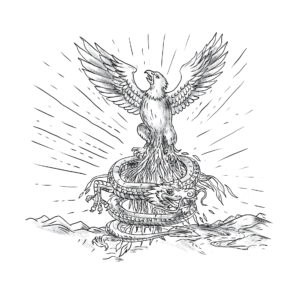
My latest MoneySense Retired Money column addresses the unique phenomenon investors have faced in 2022: for the first times in decades, both the Stock and Bond sides of the classic balanced fund or ETF are down.
Click on the highlighted headline to access the full column: The 60/40 portfolio: A phoenix or a dud for retirees?
While the column focuses on the Classic 60/40 Balanced Fund or ETF, the insights apply equally to more aggressive mixes of 80% stocks to 20% bonds, or more conservative mixes of 40% bonds to 60% stocks or even 80% bonds to 20% stocks. Most of the major makers of Asset Allocation ETFs provide all these alternatives. Younger investors may gravitate to the 100% stocks option: indeed with most US stocks down 20% or more year to date, it’s an opportune time to load up on equities if you have a long time horizon.
However, we retirees may find the notion of 100% equity ETFs to be far too stressful in environments like these, even if the Bonds complement has thus far let down the tea. As Vanguard says in a backgrounder referenced in the column, the classic 60/40 may yet rise phoenix-like from the ashes of the 2022 doldrums.
“We’ve been here before.”
On July 7th, indexing giant Vanguard released a paper bearing the reassuring headline “Like the phoenix, the 60/40 portfolio will rise again.” “We’ve been here before,” the paper asserts, “Based on history, balanced portfolios are apt to prove the naysayers wrong, again.” It goes on to say that “brief, simultaneous declines in stocks and bonds are not unusual … Viewed monthly since early 1976, the nominal total returns of both U.S. stocks and investment-grade bonds have been negative nearly 15% of the time. That’s a month of joint declines every seven months or so, on average. Extend the time horizon, however, and joint declines have struck less frequently. Over the last 46 years, investors never encountered a three-year span of losses in both asset classes.”
Vanguard also urges investors to remember that the goal of the 60/40 portfolio is to achieve long-term returns of roughly 7%. “This is meant to be achieved over time and on average, not each and every year. The annualized return of 60% U.S. stock and 40% U.S. bond portfolio from January 1, 1926, through December 31, 2021, was 8.8%. Going forward, the Vanguard Capital Markets Model (VCMM) projects the long-term average return to be around 7% for the 60/40 portfolio.”
It also points out that similar principles apply to balanced funds with different mixes of stocks and bonds: its own VRIF, for example, is a 50/50 mix and its Asset Allocation ETFs vary from 100% stocks to just 20%, with the rest in bonds.
Tweaking the Classic 60/40 portfolio
While very patient investors may choose to wait for the classic 60/40 Fund to rise again, others may choose to tweak around the edges. The column mentions how TriDelta Financial’s Matthew Ardrey started to shift many client bond allocations to shorter-term bonds, thereby lessening the damage inflicted to portfolios by bond funds heavily concentrated in longer-duration bonds.
“There is real concern among many retirees, as costs are rising rapidly and portfolios shrinking just as rapidly. What has been a mainstay of investing and security, fixed income, has offered no protection. In fact Canadian bonds were down more than the TSX over the first six months of the year!”
Ardrey has long felt standard 60/40 portfolio was no longer the optimum allocation for Retirees in particular. “After the rate cuts in 2020 that propelled many bonds up around 8% in one quarter, the writing was on the wall that they would similarly decline at some point when rates normalized. With inflation starting on its dramatic rise in 2022, we switched many clients bond allocations to shorter-term bonds.” Shifting duration has helped dampen the negative returns of long-term bond funds: XBB was down 11.89% YTD to the end of September, where XSH was down 5.57%.”
Also, the cornerstone for many retirees is a conservative dividend growth strategy, which at TriDelta is down only 5.41% so far this year. Ardrey says this illustrates what can be a real risk of indexing. “Wherever the market goes you go. When markets are going up, the ride is fine; but when there is volatility, an investor can certainly be in for some rough times. Additionally with stocks, we are also looking to drive income to the portfolio to offset the declines. Our dividend growth fund has a current yield of 4.6%. Ensuring a steady source of income for clients during volatile times is important.”

